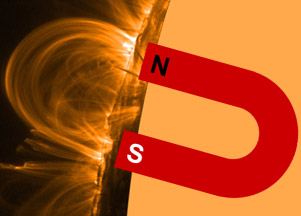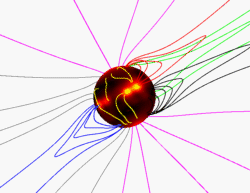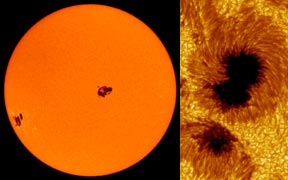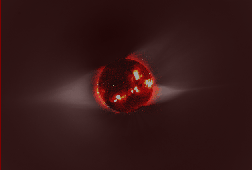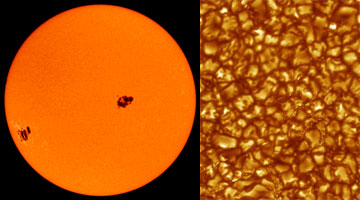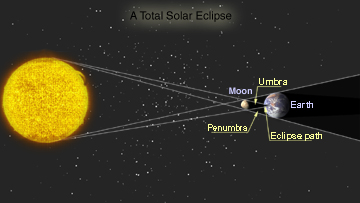Click on image for full size
Windows to the Universe original artwork by Randy Russell using an image from NASA's TRACE (Transition Region and Coronal Explorer) spacecraft.
Related links:
Movie: Journey Beneath a Sunspot
Activity: Plotting Locations of Active Regions on the Sun
Activity: Tracking the Motion of an Active Sunspot Region
Movie: Supercomputer Models Help Scientists Understand Sunspots
When Nature Strikes: Space Weather
When Nature Strikes: You Be the Solar Scientist! Classroom Activity
Active Regions on the Sun
An active region on the Sun is an area with an especially strong magnetic field. Sunspots frequently form in active regions. Active regions appear bright in X-ray and ultraviolet images. Solar activity, in the form of solar flares and coronal mass ejections (CMEs), is often associated with active regions.


